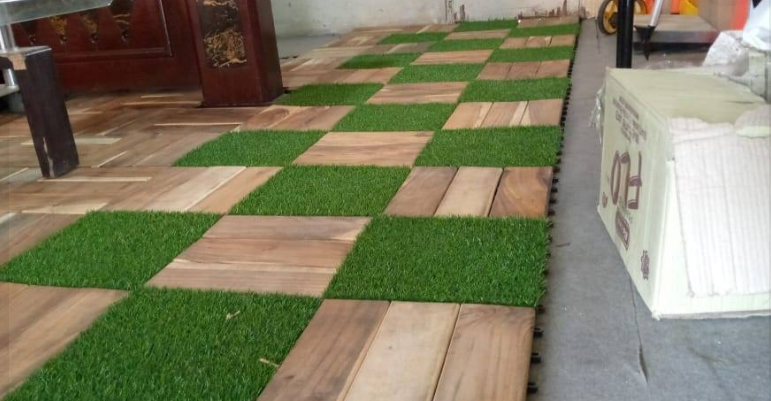Grass tiles are also artificial turf tiles or UNi synthetic grass flooring mats. These are plastic and or rubber tiles with a thick layer of plastic strands stitched nicely into the rubber tile. It is a budget-friendly and long-lasting alternative to natural grass. People living in colder areas prefer grass tiles for their gardens and exterior decor. As a result, the gardens look greener around the year.
Material of Grass Tiles
The grass tiles are based on three layers of material. The top material is called artificial grass yarn. The second layer is called polypropylene fabric. It is pores and helps in drainage. It is lightweight, tough, and provides corrosion resistance. It helps grass tiles to be used in crouching sunshine. Polyethylene, polypropylene, or nylon is used in making grass tiles. Polyethylene is recommended in artificial grass tiles because it gives them strength and softness simultaneously.
Where a Glass Tile is Used?
It is used for flooring, wall decoration, swimming pools, kindergarten, and landscaping in domestic households and commercial buildings. The minimum thickness of grass tiles can be used as floor mats in the washroom and kitchen at home. The grass tile is water resistant to a very long extent and used in outdoor, indoor, and terrace decor. It can be used on walls too. Different colors of grass tiles, like white, blue and yellow, can be used in kids’ play areas to make them more appealing and joyful. You can enhance the aesthetical value of your home exterior through such tiles. In addition, they help you improve curb appeal.
Customization Options
Grass tiles are available in various sizes, colors, and thicknesses. It’s easy to customize them as per needs and requirements. Grass tiles are available in self-interlocking, plain mate, and carpet rolls styles. It comes in a minimum 8mm thickness to 50mm thickness with a gauge of 3/16″ and 3/8″.
Maintenance of Grass Tiles
They are child-, pet-, and environment-friendly. With a grass tile, we do not have to deal with muddy puddles, weed plucking, pest sprays, and other lawn diseases. Unlike natural grass, tiles do not require any maintenance like alternative days of watering, weekly mowing, expensive fertilizers, and moderate sunlight. It saves water, money, and human energy all at the same time. They do not turn brown or pale in winter, either. It has a high resistance to cold and heat. It can maintain its shape, color, and flexibility in as low as -60° degrees centigrade cold in winter and withstand as high as 120° degrees centigrade sun heat in summer. It is manufactured in such a way that it ensures proper water drainage while raining.
How a Grass Tile is Installed?
Grass tiles are very convenient to install. One comes with an interlocking style, and the other is in plain mate style. The interlocking grass tiles can be installed without any hassle just by interlocking the locks between tiles. The plain mat-style grass tiles are installed with U-shaped ground nails, a hammer, Joint glue tape, or commercial high-contact adhesive glue. A brush would be required to apply glue and gloves to protect hands.

